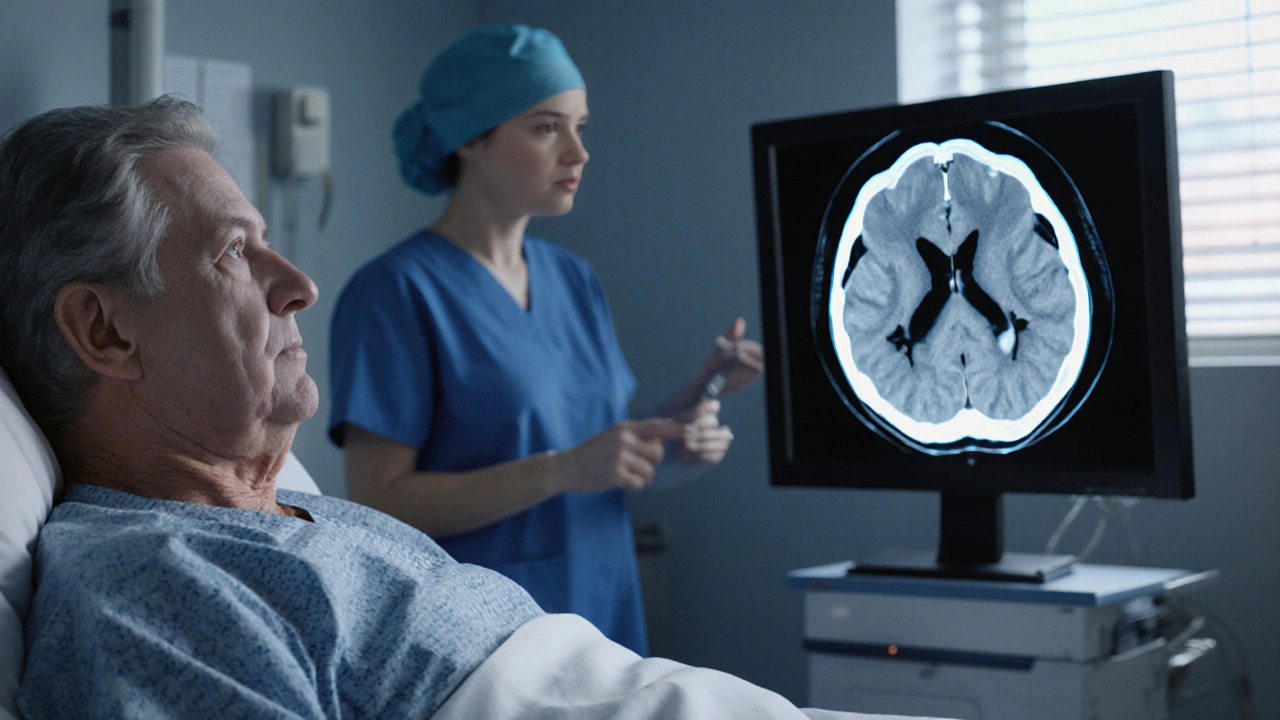
Health October 5, 2025
Subarachnoid Hemorrhage: Alternative & Complementary Therapies Guide
Complementary Therapy Selector for SAH Recovery
Your Recommended Therapies
When someone suffers a subarachnoid hemorrhage is a type of stroke caused by bleeding into the space surrounding the brain, the immediate focus is on stopping the bleed and stabilising the patient. After surgery or endovascular treatment, many families ask, “Can anything else help my loved one heal?” This guide looks at the most common alternative and complementary therapies that people add to standard care, what the evidence says, and how to choose safely.
Understanding SAH and Conventional Care
SAH accounts for about 5% of all strokes but carries a higher mortality rate than most other types. Typical medical management includes urgent imaging, surgical clipping or coiling of the aneurysm, blood‑pressure control, and nimodipine to prevent vasospasm. Rehabilitation often starts weeks later with speech, occupational and physical therapy.
Because the brain’s healing environment is complex, complementary approaches aim to reduce inflammation, improve circulation, and support mental well‑being - all factors that can influence long‑term outcomes.
Why Consider Complementary Approaches?
Research shows that stress, poor sleep, and sedentary habits can hinder neuro‑recovery. Integrative methods such as gentle movement, mind‑body techniques, and specific nutrients have shown modest benefits in stroke‑related studies, most of which include SAH patients as a subgroup. The key is to view these options as adjuncts, not replacements, for medical treatment.
Acupuncture
Acupuncture is a traditional Chinese medicine practice that stimulates specific points on the body with thin needles. Small studies in post‑stroke patients suggest it can improve motor function and reduce headache intensity, a common lingering symptom after SAH. Typical protocols involve 2‑3 sessions per week for six weeks, focusing on points linked to cerebral blood flow (e.g., GV20, LI4).
Safety tips: choose a certified practitioner, disclose any anticoagulant use, and avoid needling near recent surgical sites.
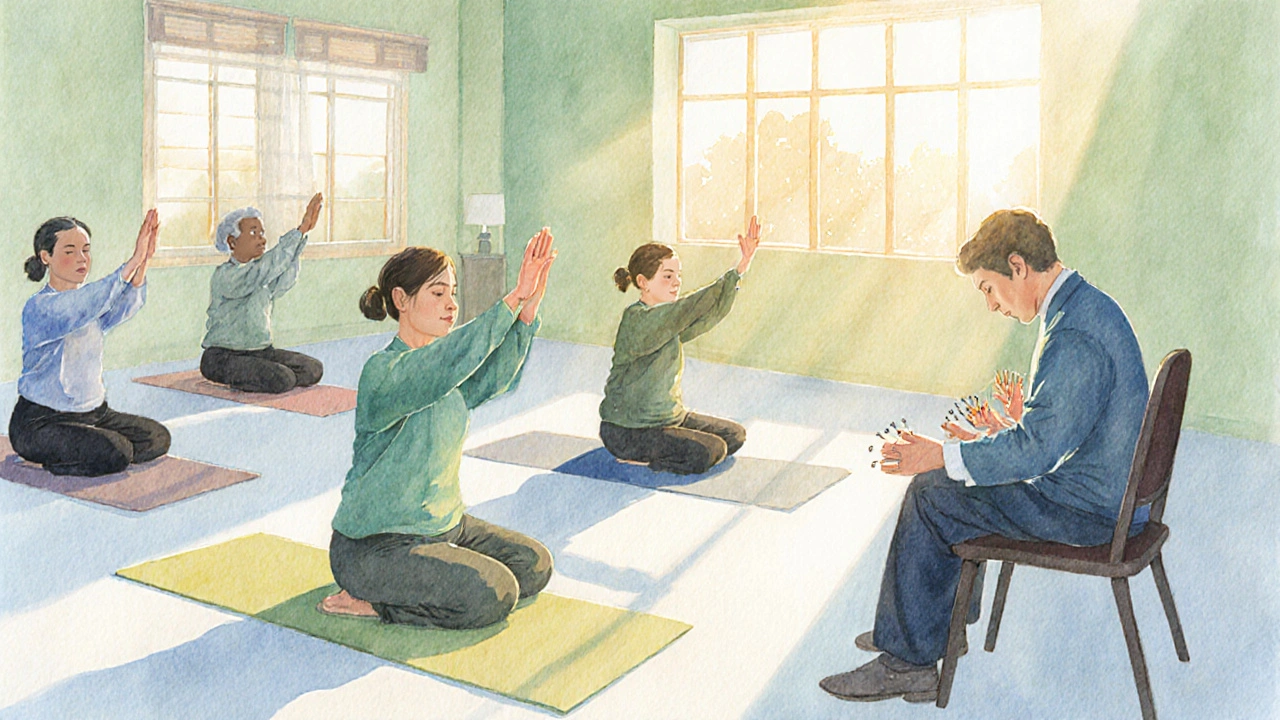
Yoga & Tai Chi
Yoga is a mind‑body practice that blends postures, breathing, and meditation. A 2022 meta‑analysis of stroke rehabilitation found that yoga improved balance and gait speed by an average of 0.12m/s. For SAH survivors, gentle Hatha or restorative classes are safest, avoiding deep backbends that raise intracranial pressure.
Tai Chi is a low‑impact Chinese martial art characterised by slow, flowing movements. Randomised trials report similar gains in functional independence and a reduction in anxiety scores. Sessions of 30minutes, three times weekly, can be adapted for wheelchair‑bound patients.
Mindfulness Meditation
Mindfulness meditation involves paying non‑judgmental attention to the breath, body sensations, and thoughts. In a 2021 pilot with SAH patients, daily 10‑minute mindfulness reduced depressive symptoms by 30% and improved self‑reported quality of life. The practice requires no equipment and can be guided via smartphone apps or audio recordings.
Start with a simple “box breathing” technique: inhale 4seconds, hold 4, exhale 4, hold 4, repeat for five cycles.
Nutritional Supplements
Two supplements have the most research support for cerebrovascular health.
- Omega‑3 fatty acids (EPA/DHA) are polyunsaturated fats that modulate inflammation and improve endothelial function. A dose of 1g daily for three months lowered serum inflammatory markers (CRP) in a cohort of SAH survivors.
- Ginkgo biloba extract contains flavonoids and terpenoids that enhance cerebral blood flow. In a double‑blind study, 120mg twice daily for six weeks modestly improved memory recall without raising bleeding risk when combined with low‑dose aspirin.
Never start high‑dose supplements without checking with the neurologist, especially if anticoagulants are in use.
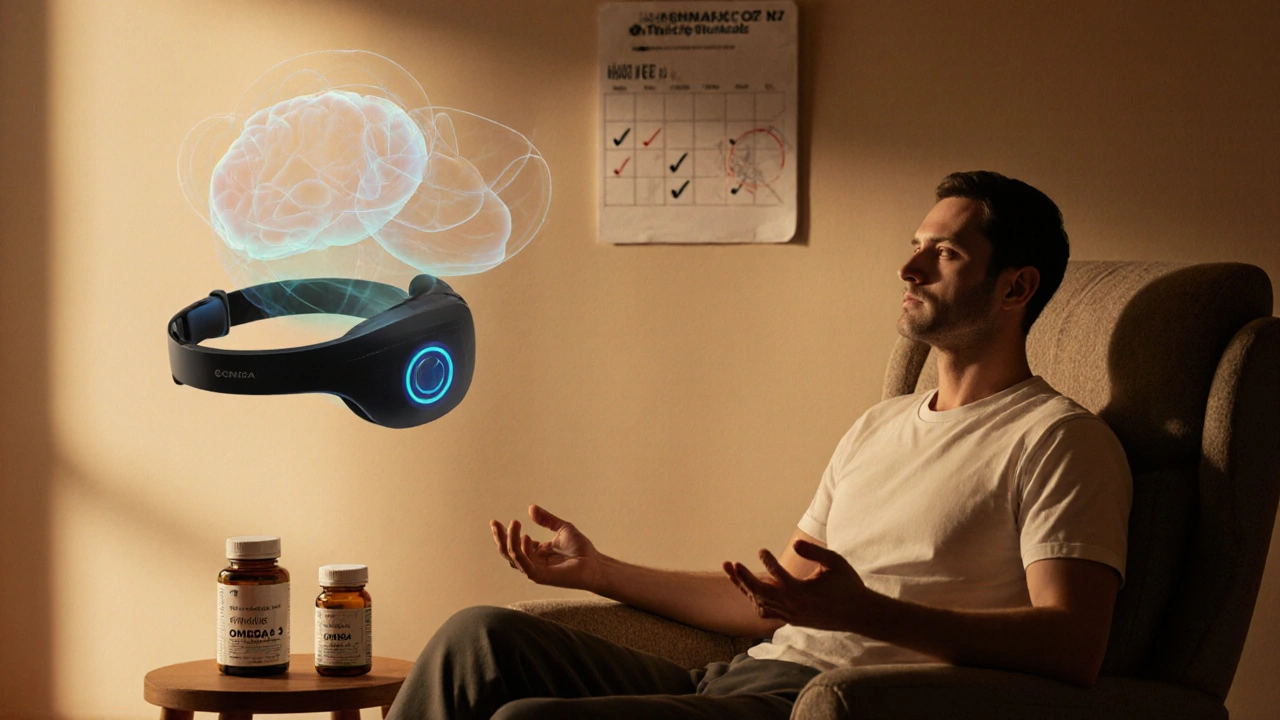
Physical Therapy & Neurofeedback
Physical therapy remains the cornerstone of functional recovery. Incorporating task‑specific gait training and resistance exercises within the first 2-4weeks post‑SAH has been linked to a 15% reduction in long‑term disability scores.
Neurofeedback is a non‑invasive technique that trains brain‑wave patterns using real‑time EEG displays. Early feasibility trials suggest it can improve attention and reduce post‑traumatic headache frequency, though larger studies are still pending.
Choosing Safe & Effective Options
Below is a quick comparison of the most popular complementary therapies for SAH recovery. Use it as a checklist when discussing options with your healthcare team.
| Therapy | Evidence Level | Potential Benefits | Common Risks | Typical Use |
|---|---|---|---|---|
| Acupuncture | Moderate (small RCTs) | Reduced headache, improved motor scores | Bruising, infection (rare) | 2‑3sessions/week, 6weeks |
| Yoga / Tai Chi | Strong (meta‑analysis) | Better balance, lower anxiety | Strain if over‑exerted | 30‑min class, 3times/week |
| Mindfulness Meditation | Strong (RCTs) | Depression reduction, pain control | None reported | 10‑min daily practice |
| Omega‑3 Supplements | Moderate (observational) | Anti‑inflammatory, vascular support | GI upset, bleeding risk at high doses | 1g daily, with meals |
| Ginkgo biloba | Low‑moderate (small RCTs) | Improved cerebral flow, memory | Potential interaction with anticoagulants | 120mg BID, 6weeks |
| Physical Therapy | Strong (large RCTs) | Functional independence, strength | Fatigue if over‑trained | Individualised program, 5‑7sessions/week |
| Neurofeedback | Emerging (pilot studies) | Attention, headache reduction | Minimal; rare dizziness | 30‑min session, 2‑3times/week |
Key take‑aways:
- Start with low‑risk, evidence‑backed options like yoga, meditation, and physical therapy.
- Discuss any supplement or acupuncture plan with your neurologist, especially if you’re on blood thinners.
- Track progress using a simple diary - note pain scores, mood, and functional milestones each week.
Frequently Asked Questions
Can complementary therapies replace medication after SAH?
No. Standard medical treatment-blood pressure control, nimodipine, and surgical repair-remains essential. Complementary methods are adjuncts that may improve quality of life and functional recovery.
Is it safe to practice yoga if I still have a headache?
Gentle, restorative yoga poses that avoid neck hyperextension are generally safe. Stop any movement that worsens pain and consult your physician if headaches become severe or sudden.
How long before I can start acupuncture after surgery?
Most clinicians wait 2-4weeks post‑procedure to ensure the surgical site has healed and bleeding risk is low. Always inform the practitioner about any implants or anticoagulants.
Do omega‑3 supplements increase bleeding risk?
At standard doses (1g EPA/DHA daily) the bleeding risk is minimal, but high doses (>3g) may potentiate anticoagulant effects. Discuss dosage with your doctor.
What is the best way to track my progress?
Use a simple spreadsheet or notebook: record daily pain level (0‑10), mood, sleep hours, and any functional tasks (e.g., walking distance). Review the log with your rehab team every two weeks.
Write a comment
Items marked with * are required.
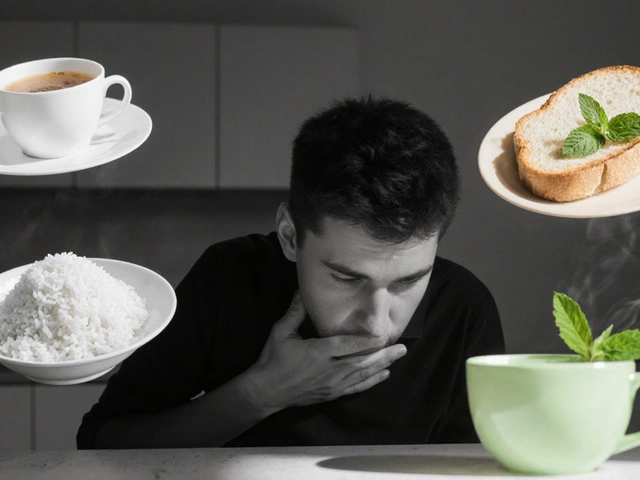
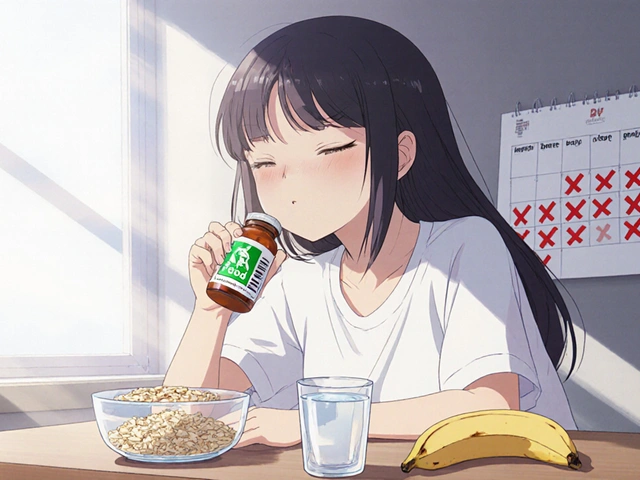
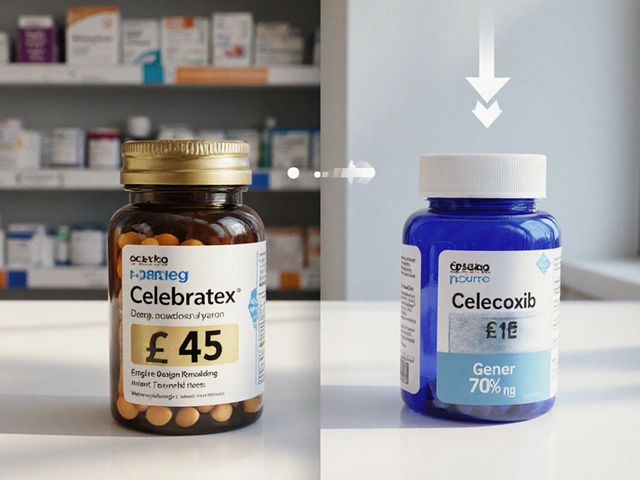
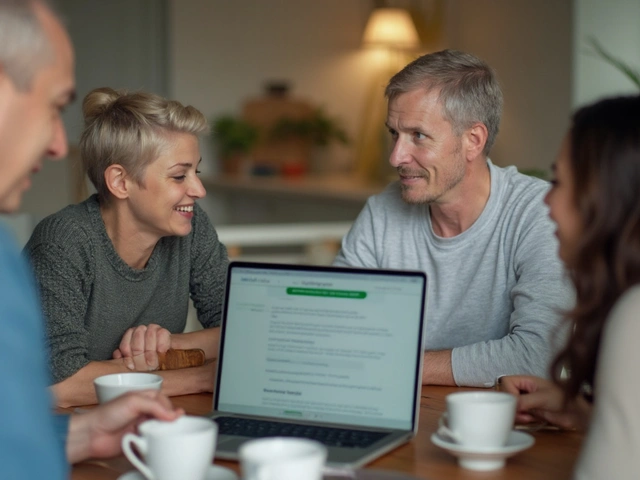


15 Comments
Nonie Rebollido October 7, 2025 AT 11:19
Love this guide! I’ve been doing 10-min mindfulness with my mom post-SAH and she’s way calmer. No more midnight pacing. 🙌
Rekha Tiwari October 8, 2025 AT 01:02
This is gold. My uncle did tai chi 3x/week after his SAH and went from wheelchair to walking with a cane in 3 months. No magic, just consistency. 💪🌸
Andy Smith October 9, 2025 AT 02:53
Important to clarify: ginkgo biloba’s interaction with anticoagulants isn’t just theoretical-it’s documented in case reports of postoperative hematoma. Even at 120mg BID, the CYP2C19 and P-gp inhibition can potentiate warfarin or DOAC effects. Always check INR or anti-Xa levels. Also, quality control varies wildly-use standardized extracts like EGb 761.
Eric Pelletier October 9, 2025 AT 10:46
Acupuncture’s mechanism isn’t just ‘energy flow’-fMRI studies show it modulates the default mode network and reduces nociceptive signaling in the insula and anterior cingulate. GV20 and LI4 aren’t arbitrary; they’re neuroanatomically targeted. The 2021 RCT in *Neurorehabilitation and Neural Repair* showed significant reduction in headache VAS scores (p=0.014) with real vs. sham acupuncture. Just make sure the needles are sterile and the practitioner knows SAH contraindications.
Also, don’t skip the neurofeedback. It’s emerging, yes-but EEG coherence in theta-alpha bands correlates with improved attentional control post-TBI/SAH. One pilot showed 40% reduction in post-traumatic headache frequency after 12 sessions. Worth a trial if access is available.
Ophelia Q October 11, 2025 AT 01:09
My sister started omega-3s at 1g/day after her SAH and her brain fog lifted within 6 weeks. No more forgetting names. She still takes fish oil with food-no stomach issues. ❤️
McKayla Carda October 11, 2025 AT 15:58
Yoga > stretching. Always.
Jenna Hobbs October 12, 2025 AT 16:09
I cried reading this. My husband had a ruptured aneurysm in 2021. We tried everything-physical therapy, meditation, even acupuncture. But it was the daily 10-minute box breathing that brought him back to himself. Not cured-but *present*. Thank you for writing this.
Agha Nugraha October 13, 2025 AT 00:29
Good summary. I’m from India and we use turmeric with black pepper for inflammation. Not sure if it helps SAH specifically but it’s safe and tasty.
Robert Gallagher October 13, 2025 AT 07:44
People need to stop treating this like a wellness retreat. SAH is a medical emergency. You don’t heal with yoga and omega-3s-you heal with surgery, nimodipine, and ICU care. Complementary stuff is nice, but don’t let your grandma’s herbal tea replace a neurologist’s prescription. I’ve seen too many families delay rehab because they were ‘trying holistic options.’
Also, neurofeedback? It’s expensive and not FDA-approved for SAH. Don’t waste your money unless it’s part of a clinical trial.
Elliott Jackson October 13, 2025 AT 15:46
OMG I knew it. This is why I stopped taking ginkgo after my SAH. My neurologist said ‘it’s like pouring gasoline on a fire if you’re on Eliquis.’ I’m not some hippie-I’m a data guy. I checked the PubMed studies. Ginkgo increases bleeding risk 2.3x in anticoagulated patients. Period. 🚫
John Villamayor October 15, 2025 AT 04:29
Acupuncture worked for my dad after his SAH. He got headaches for months. After 6 weeks of twice-weekly sessions, they vanished. No drugs. Just needles. I’m not religious about it but I’m not skeptical either.
Stacy Reed October 16, 2025 AT 13:00
But have you considered the metaphysical implications of cerebral vasospasm? It’s not just a physiological event-it’s a symbolic rupture in the soul’s connection to the material plane. The mind doesn’t heal with exercises, it heals with surrender. Have you meditated on the impermanence of the blood-brain barrier?
Christopher Ramsbottom-Isherwood October 17, 2025 AT 12:24
Actually, the meta-analysis on yoga and gait speed? It was underpowered. Only 3 studies included SAH patients, and two were from the same research group. Also, 0.12 m/s improvement is clinically meaningless-it’s like saying you walked from your couch to the fridge faster. Big whoop.
Marshall Pope October 19, 2025 AT 00:36
my bro did tai chi after his sah and now he walks like a ninja. no joke. 30 min 3x a week. life changer.
Leah Beazy October 20, 2025 AT 16:20
Just started mindfulness with my mom. She says it’s like hitting pause on the noise in her head. I’m so proud of her. We’re doing it together every morning. 10 minutes. No pressure. Just breath. 💕